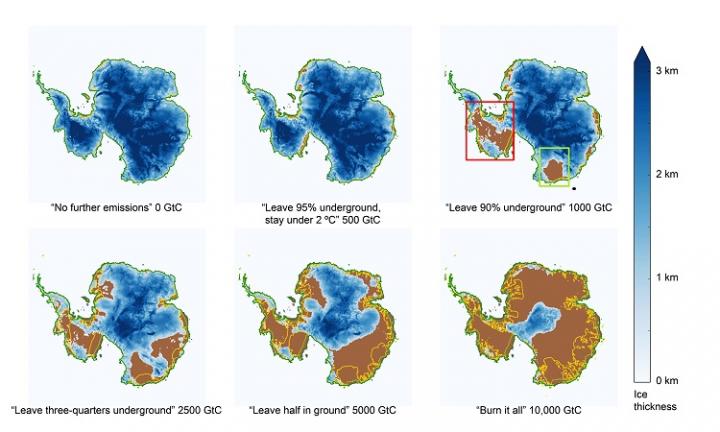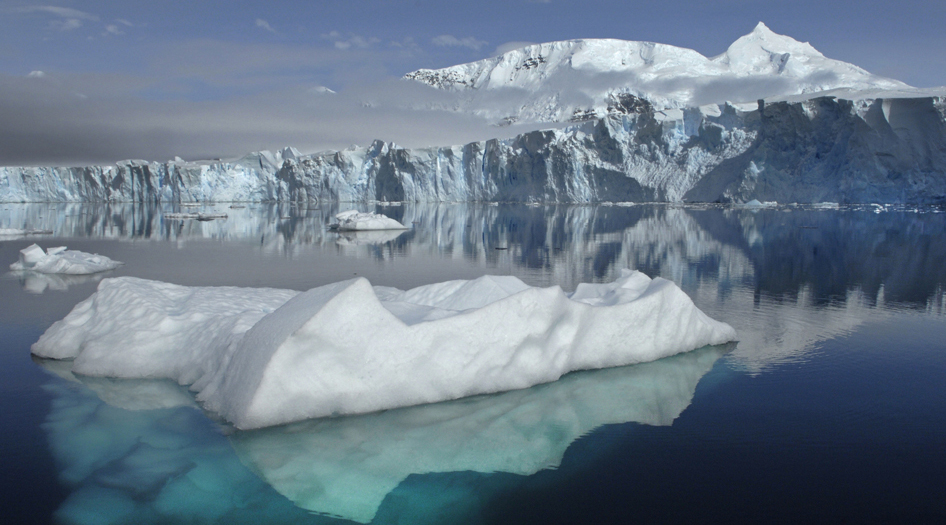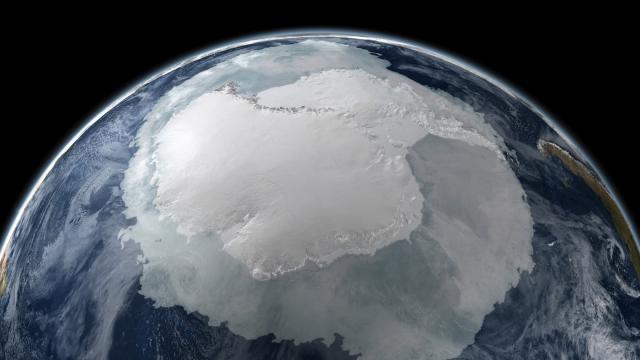If we burned all the coal, oil and gas that’s left in the ground, we’d melt Antarctica and global sea levels would rise as much as 60 metres over the next ten thousand years. Coastal cities from New York to Shanghai would wind up deep underwater.
That’s the disturbing conclusion of a new modelling paper that appears today in Science Advances. It sounds pretty pessimistic, but in a world where the basic premise of climate change is under constant attack, scientists have begun turning to extreme scenarios to make their point crystal clear. The new study is the first to model the effects of unfettered fossil fuel burning across the entire Antarctic ice sheet.
“Our study shows that if we don’t leave most of the carbon in the ground, we are going to melt most of the ice on this planet,” lead study author Ken Caldeira of the Carnegie Institution told Gizmodo.
Burn It All
There are roughly 10,000 billion metric tons (Gt) of carbon-rich fuel sitting beneath our feet, according to a recent report by the Intergovernmental Panel on Climate Change (IPCC). Human activities have already caused the release of some 555 Gt of carbon dioxide since the beginning of the industrial revolution. If we’d like to cap ourselves at 2ºC of global warming over the long term and avoid catastrophic climate change, we’ve got to limit our future emissions to another 600 Gt of carbon or less, says the IPCC.
But what if that doesn’t happen?
In their paper, the researchers used an ice-sheet evolution model to study Antarctica under future emissions scenarios ranging from 100 Gt (very optimistic) to 10,000 Gt (burn it all!). The models, which account for atmospheric and oceanic warming and changes in Antarctic snowfall patterns, tracked the concentration of carbon in the atmosphere, the loss of Antarctic ice, and the resultant global sea level rise over the next 10,000 years.

Chart showing how Antarctic ice would be affected by different emissions scenarios. (GtC = gigatons of carbon). Image Credit: Ken Caldeira and Ricarda Winkelmann
Consistent with other models, the researchers find that the West Antarctic ice sheet becomes highly unstable under an emissions scenario that leads to 600 Gt of additional carbon release. In that scenario, the world would see 0.6 to 0.9 metres of sea level rise this century, and up to 2 metres over the course of a millennia. That’s a risky, but perhaps manageable amount.
“The West Antarctic ice sheet may already have tipped into a state of unstoppable ice loss, whether as a result of human activity or not,” study co-author Anders Levermann said in a statement. “But if we want to pass on cities like Tokyo, Hong Kong, Shanghai, Calcutta, Hamburg and New York as our future heritage, we need to avoid a tipping in East Antarctica.”
Under emissions scenarios that lead to 1000 Gt additional carbon or more, the Wilkes Basin in East Antarctica begins to retreat, eventually yielding another three to four metres of sea level rise. And under even worse scenarios, all bets are off. From the paper:
Other marine based drainage systems become unstable under higher emission scenarios, until most of the marine ice is eventually lost to the self-reinforcing feedback after about 2500 GtC of cumulative carbon release….With unrestrained future CO2 emissions, the amount of sea-level rise from Antarctica could exceed tens of metres over the next 1000 years and could ultimately lead to the loss of the entire ice sheet.
“We show for the first time that there is sufficient fossil fuel in the ground to melt effectively all of Antarctica, eventually producing close to 60 metres of sea level rise,” Caldeira says.
Short Term Uncertainty

Image Credit: NASA / JPL
To Robert Kopp, a Rutgers paleoclimatologist who studies past changes to the Antarctic ice sheet, these numbers aren’t all that surprising.
“The warmer scenario is a 10 degree warming scenario, one in which we’ve turned the climatological clock back 40-50 million years,” Kopp told Gizmodo. “That long ago, there wasn’t a large ice sheet in Antarctica. That’s kinda what you’d expect to be the long-term response.”
In Kopp’s mind, the major uncertainty is how long it will take us to get to that point. “The near-term change is harder to figure out than the long term change,” he says, explaining that when modelers add or subtract fine-scale physical mechanisms, the century predictions can fluctuate dramatically.
“You may have a better idea of how far you’re going to be driving over an hour versus over the next five minutes,” he says.
While the short-term consequences of unabated carbon emissions aren’t totally clear, it seems there’s only one way things can end for Antarctica if we do burn all of our fossil reserves. The tremendous long-term melt has to do with the fact that CO2 is a pretty long-lived greenhouse gas.
“The Earth stays hot for a long time,” Caldeira says. “Even though, in all of our scenarios, most of the fossil fuel is burnt within a century or two, the CO2 persists in the atmosphere for many thousands of years.”
These are some pretty darn sobering facts, but aren’t we being just a little alarmist here? After all, we’re still hoping to limit our carbon emissions to an additional 600 Gt of carbon. We’d have to really screw up to burn nearly 20 times that amount, wouldn’t we?
Yep, we would! But the fact remains that we’re running out of time to meet our 600 Gt / 2ºC warming target. If we don’t come to some serious carbon reduction resolutions at the Paris climate conference this December, we’ll be steering ourselves into very uncharted territory.
Perhaps we need a little dose of worst-case to kick our bums into gear.
[Read the full paper at Science Advances]
Top image via NASA/Goddard Space Flight Center Scientific Visualisation Studio
